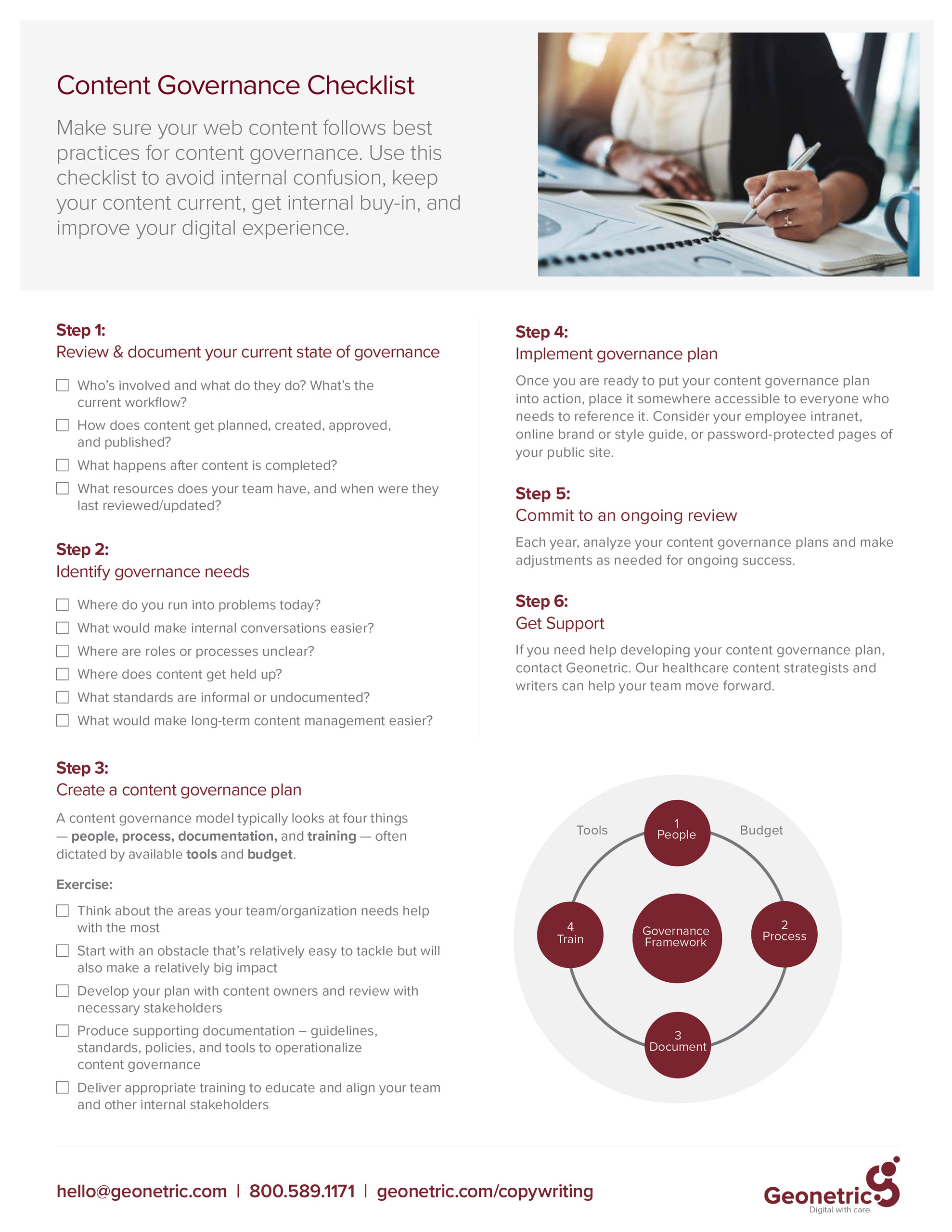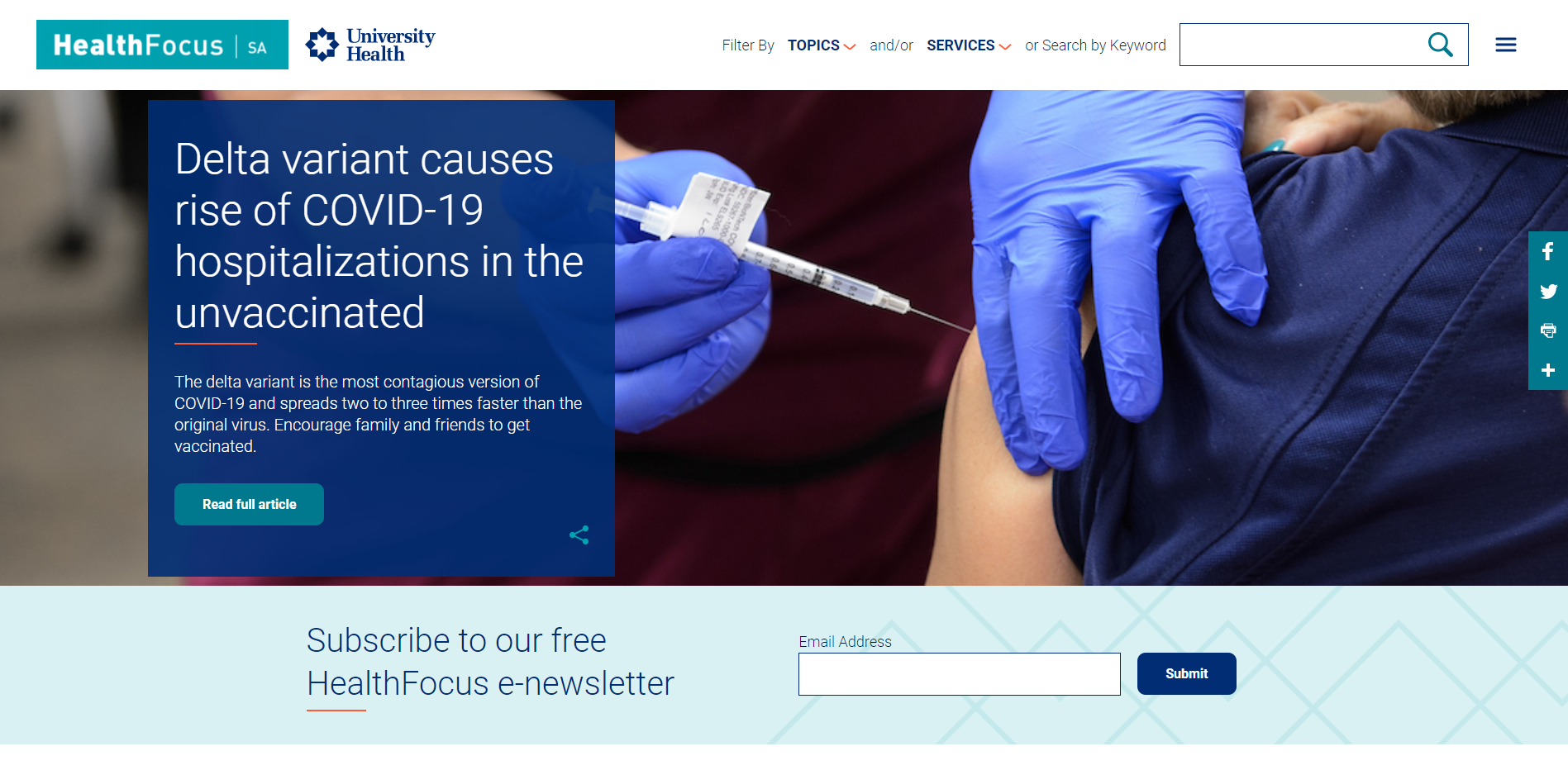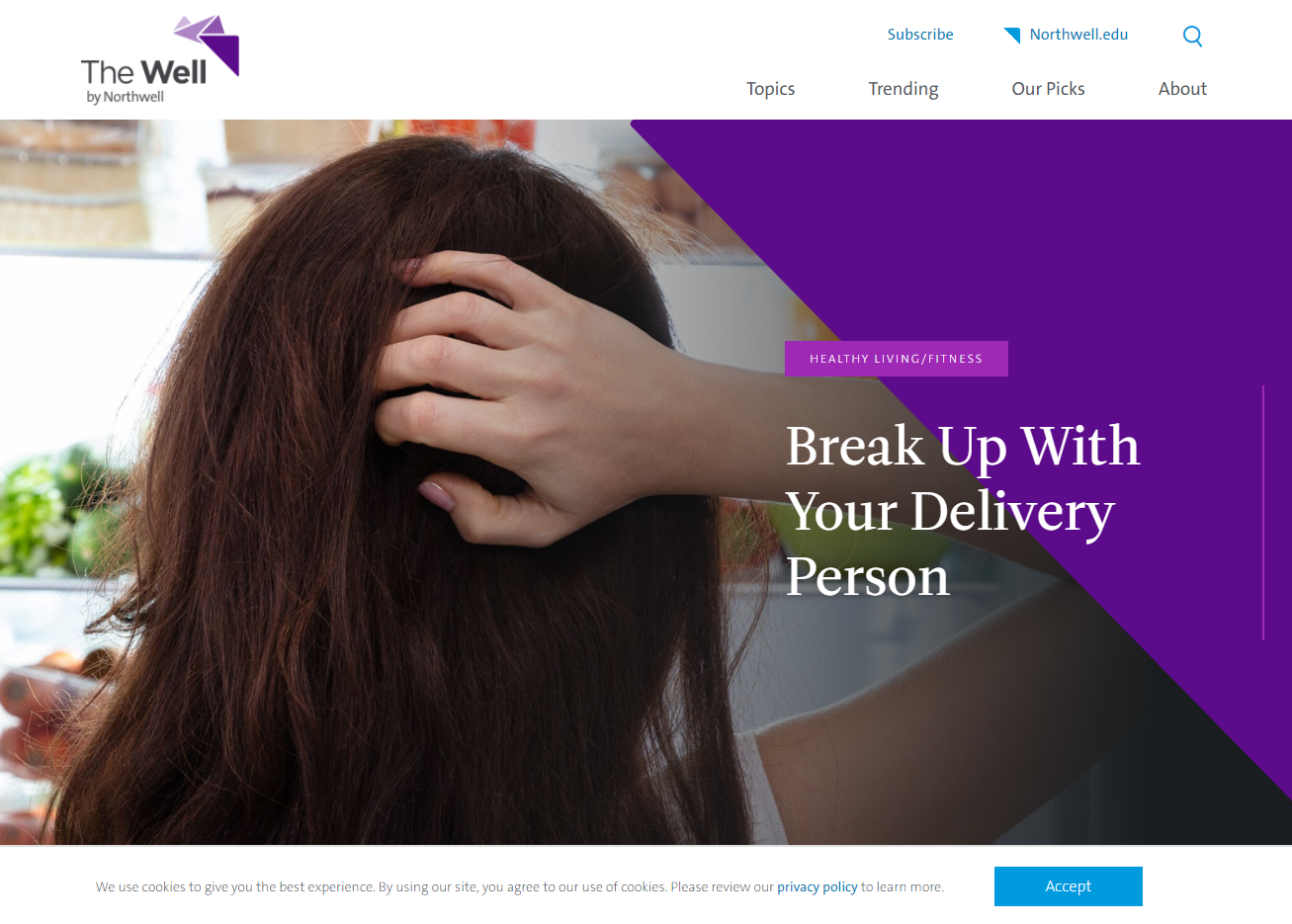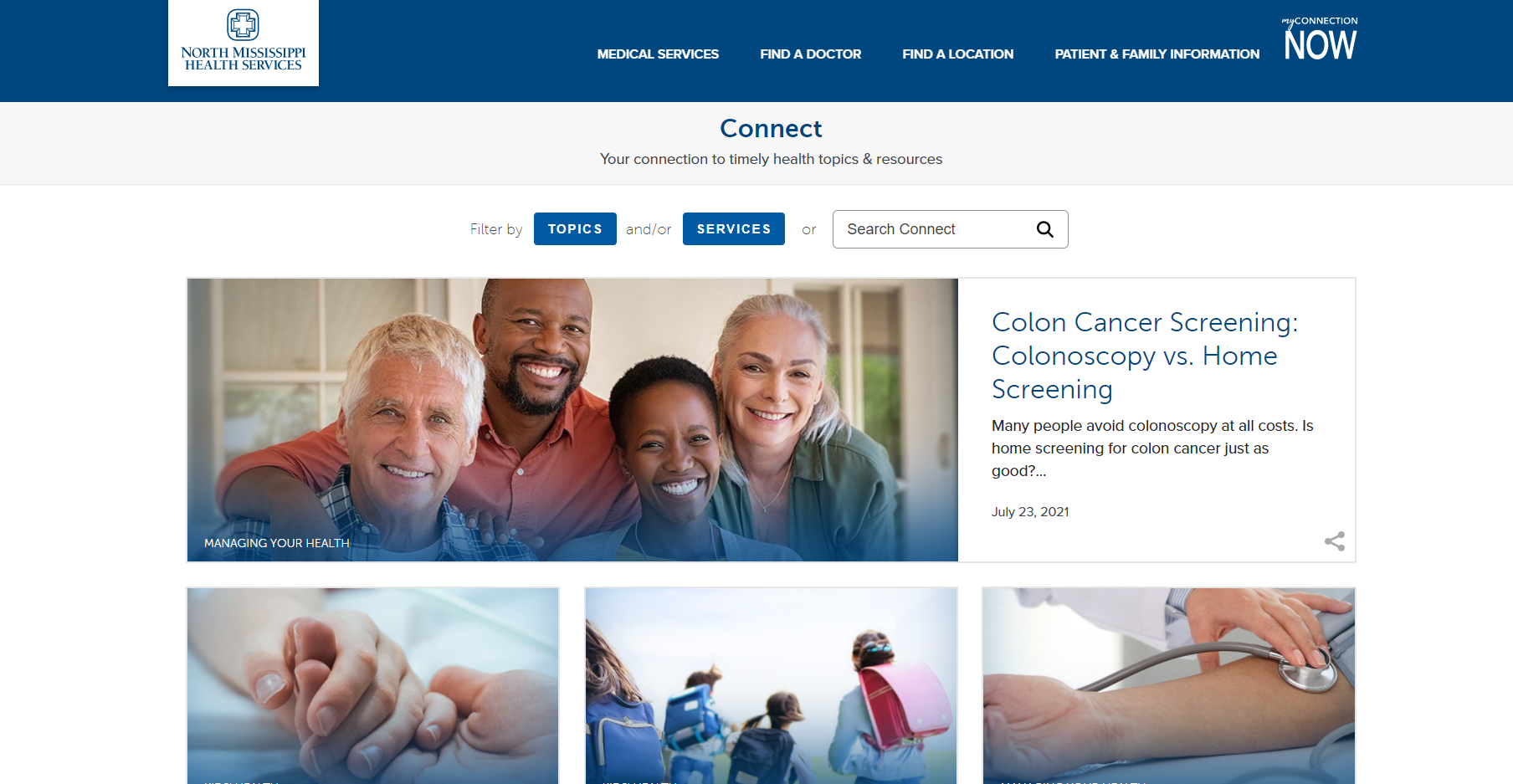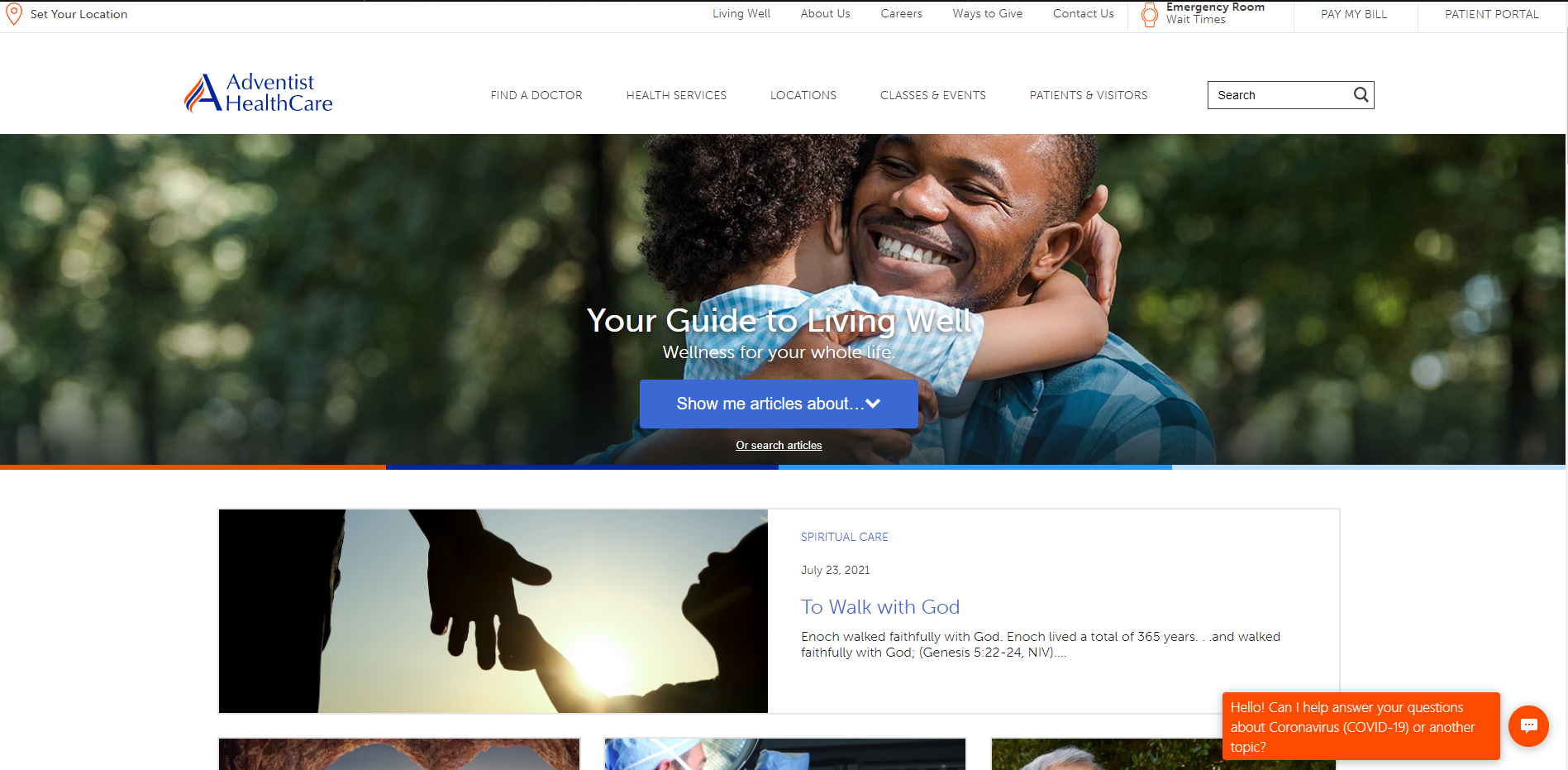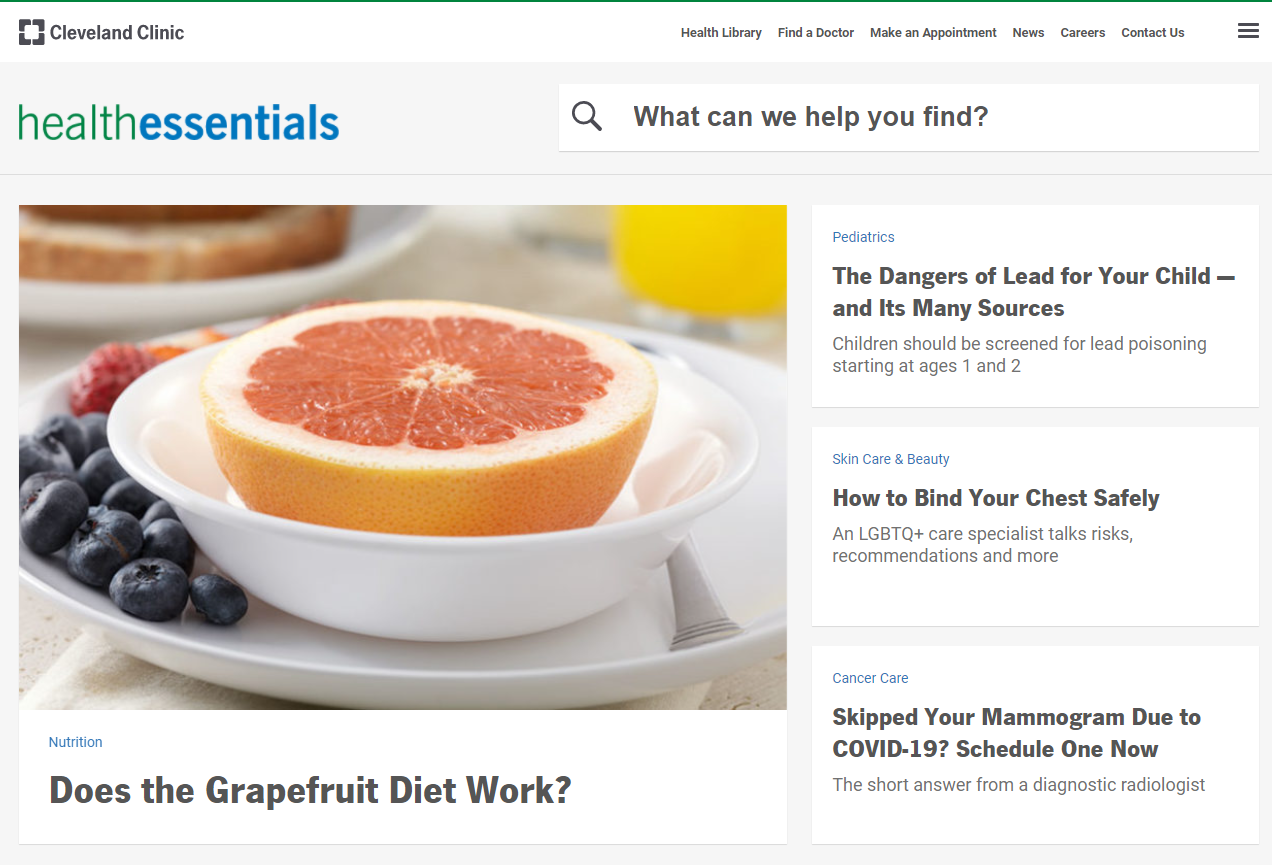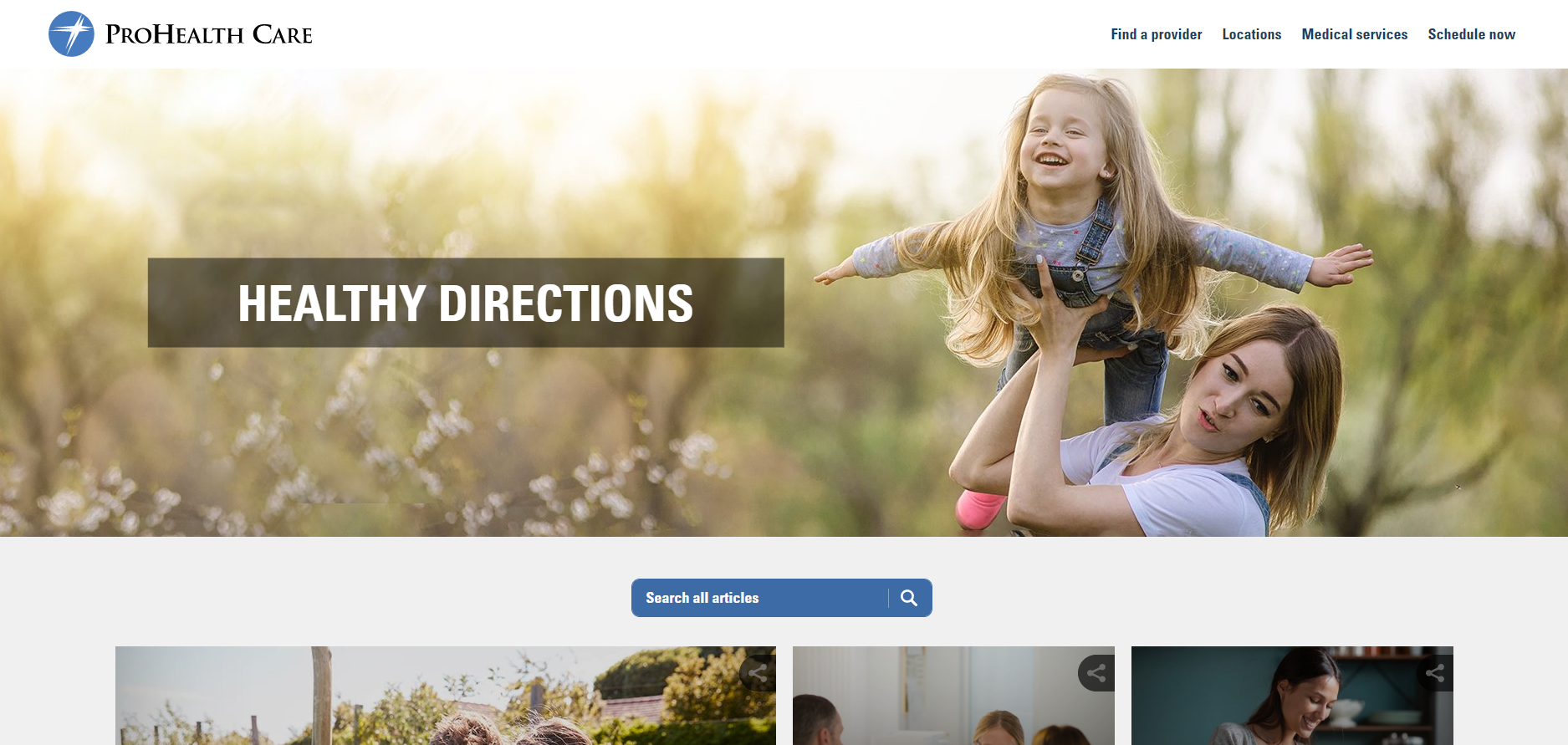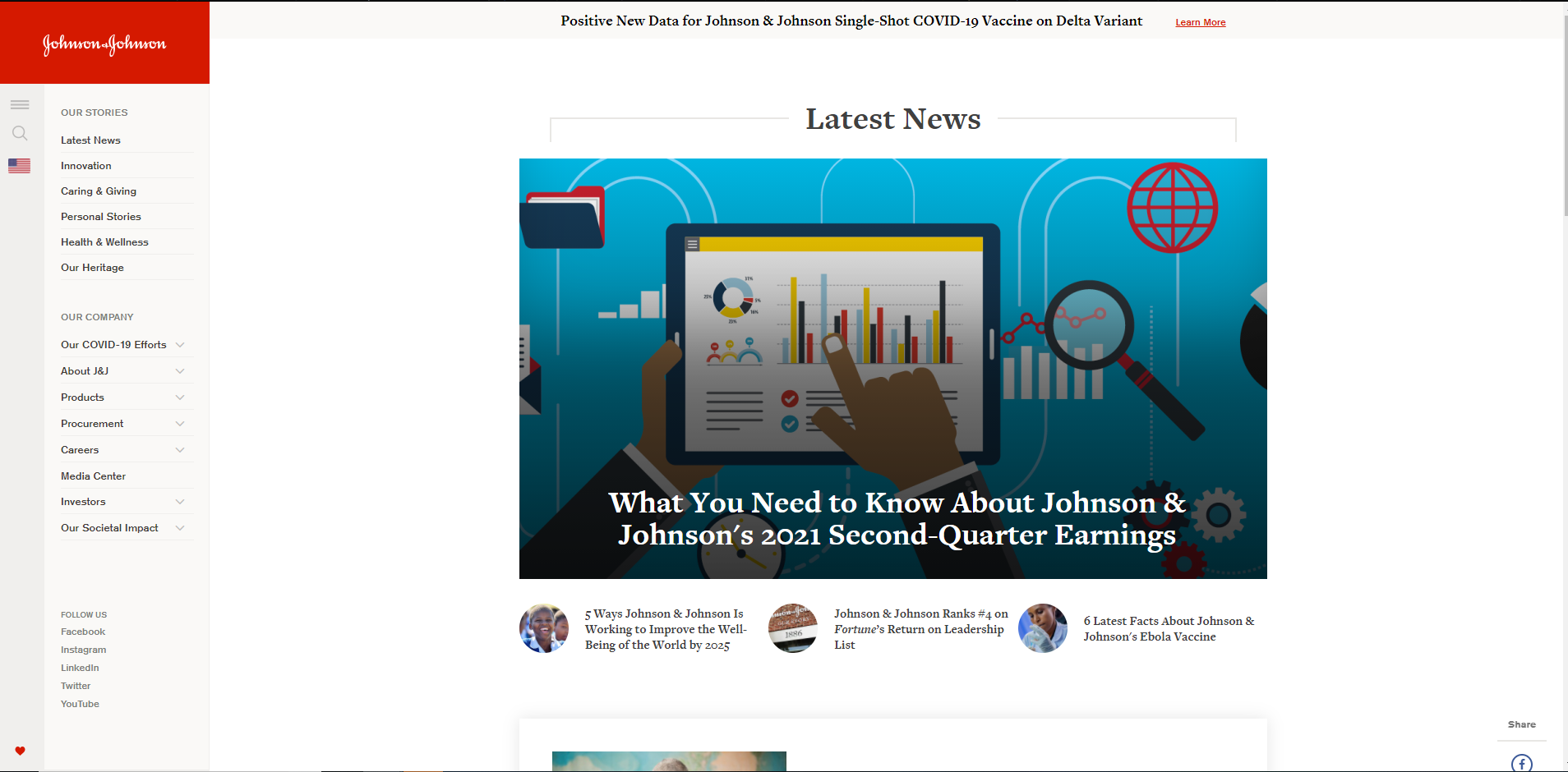Your website is constantly evolving, and that’s why having a governance framework is essential. Healthcare organizations like yours seek guidance on how to establish internal accountability, define roles, and assign decision-making authority. Content governance can help avoid confusion, keep your content current, get internal buy-in, and improve your digital experience.
Signs you need help
It’s common to feel that your content is in a constant state of chaos, but you don’t have to. Your organization would benefit from content governance if you:
- Don’t have a consistent voice and tone throughout your website
- Don’t know what content exists on your website
- Struggle to maintain existing content
- Experience delays in getting content published because of inefficient content development, editing, and review processes
- Are unclear who approves the final content
- Have pages that haven’t had an update in years
- Have duplicate content
- Grapple with too many urgent, high-priority content requests
- Struggle to find content assets in your digital asset manager (DAM)
What is content governance?
Content governance is a plan to achieve your internal content strategy. It’s the framework that helps your team keep track of all the moving parts and determine how content gets created, reviewed, and published.
Benefits of governance
Maintaining good content on your website is vital to the user experience and your brand. It produces better results – for both end-users and your organization.
Internal benefits
Having a practical governance framework in place helps you:
- Align content with overall strategic direction, brand voice, and goals
- Increase productivity, accountability, and collaboration
- Resolve conflicts and questions more quickly because you can refer to agreed-upon procedures and direction
- Build a scalable and repeatable content operation process for current and future content contributors
- Protect your content from internal requests that don’t meet the priorities of your target audiences
- Reduce risk to reputation and legal status
- Enhance brand with consistent, high-quality experiences across digital properties
Audience benefits
Governance helps you create a better user experience. When you implement a solid content governance plan, your website visitors may find it easier to:
- Accomplish their top tasks
- Get to know your brand
- Know what to expect when they engage with your organization online
- Find relevant, up-to-date information
Governance framework
The main components of content governance include people, process, documentation, and training. Let’s look at each more closely.
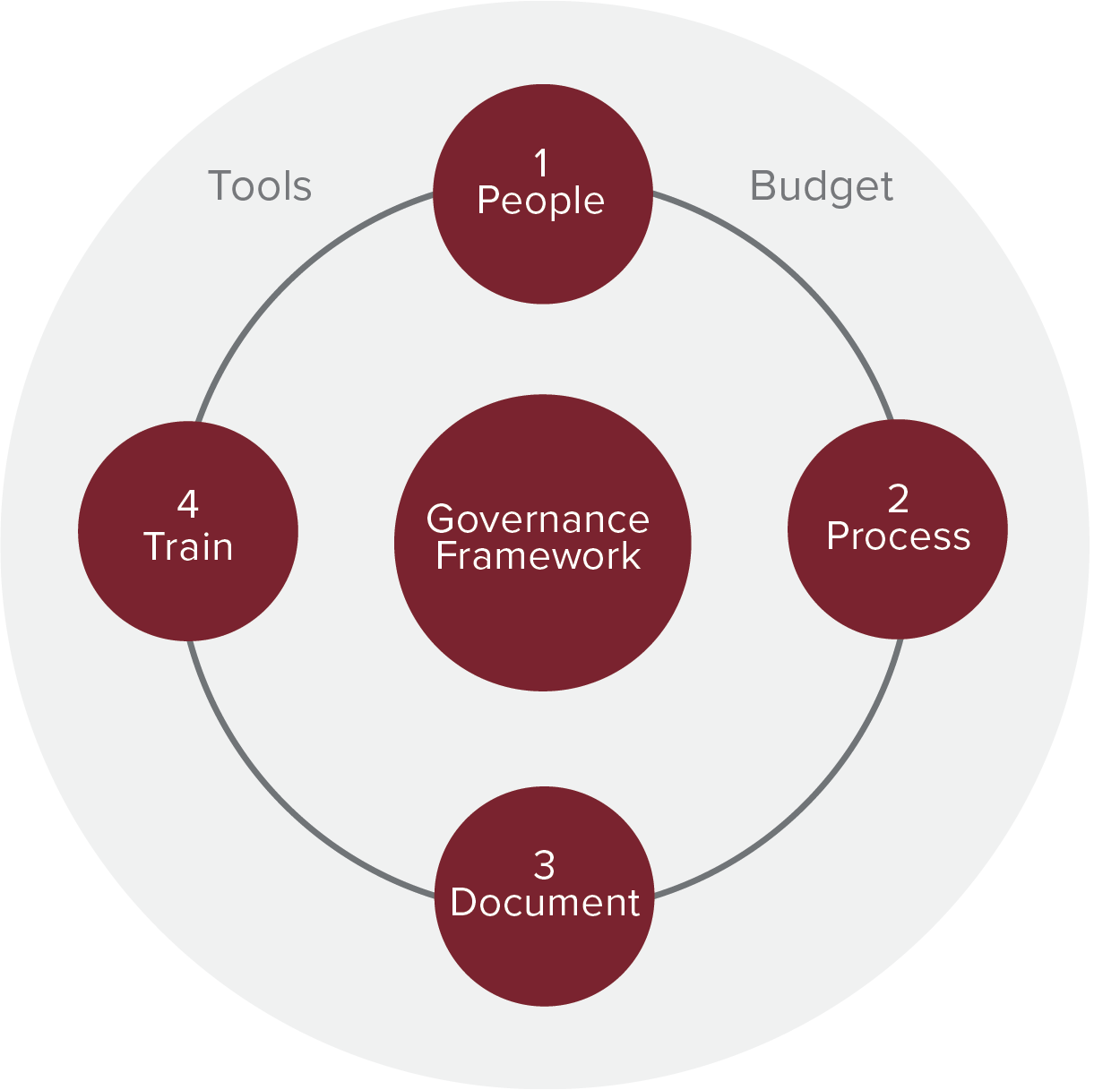
People
The first element of the framework is the people. It:
- Defines “who” and “what”
- Establishes roles, responsibilities, and decision-making authority
- Considers your core team, content contributors, and stakeholders
Process
Processes will get your team on the path to creating high-quality content with fewer delays, misunderstandings, and frustrations. Process:
- Defines “when,” “where,” and “how” to get content moving through your organization efficiently
- Establishes workflows related to planning, creating, publishing, and maintaining content
Documentation
Documents can pave the road for consistency and quality at your organization. Documentation:
- Defines “why” and “how”
- Establishes standards, policies, guidelines, and tools to encourage consistent, quality content
- Serves as a “single source of truth” to resolve confusion or conflicts
Content documentation examples include:
- Core content strategy statement
- Editorial style guide
- Content review checklist
- Editorial Calendar
- Stakeholder request decision tree
Training
Training makes sure everyone has the information they need to put your governance plan into action. This piece of governance can include different types and levels of training depending on roles and responsibilities.
Training examples:
- CMS/DAM training
- Writing for the web training
- Accessibility training
- Training on new or updated standards, policies, and guidelines
Where to start
In an ideal world, content governance starts early – before you begin writing content, designing layouts, uploading media, and publishing pages. However, your organization can benefit from moving forward with improving your governance anytime. Governance may fit seamlessly in your project timeline if you:
- Are ready for a redesign
- Hire a new team member
- Have changes in your organization or brand
- Have new content needs
- Hear concerns or complaints from stakeholders
- Implement new technology or features
Content governance tips
How to get started
As your website evolves, your governance plan should too. The key to getting started on developing or maturing your governance plan is to start by understanding where your team or organization is at today.
Contact us before you create your governance plan. Geonetric’s experts can facilitate discussions, share examples of approaches that have worked for other healthcare organizations, and help teams move governance documentation forward while still accomplishing day-to-day work.

